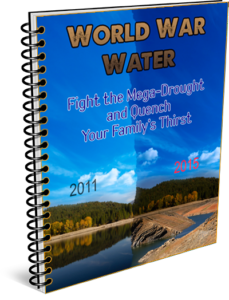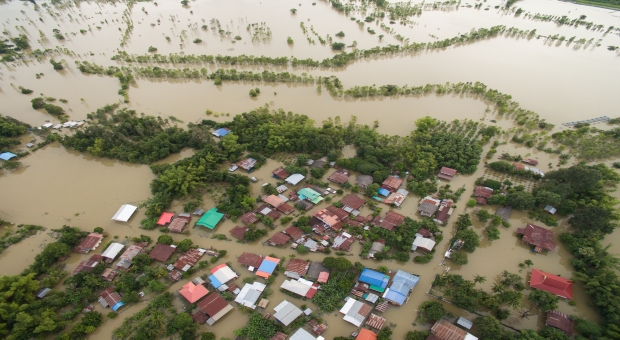The rainy season might mean fewer outdoor activities for many of us.
And while it stirs different emotions in different people, the wet season gives every homeowner a chance to do something fun and worthwhile like spruce up their outdoors! And what could be a better place to start than in your garden? The rainwater along with the cool breeze of air are perfect for growing new plants and bringing the lush back to your garden.
Nonetheless, there are some concerns about safety that every homeowner should keep in mind when maintaining their gardens during the rainy season.
Home Garden Safety Tips for the Rainy Season
Don’t let the wet season “rain on your parade”.
Check out the following home garden safety tips for the rainy season.
Shade your plants
You don’t just shade your plants during the summer. You also do it during the rainy season. Otherwise, there will be a higher risk of fertile soil erosion, which is not good for your plants. To prevent soil erosion, you can cover your plants with perforated sheets that are specially designed for gardening to still allow rainwater to reach the plant without making the soil too soft.
This Device Easily Turns Air Into Water!
Here are some additional tips to protecting your plants against heavy rain:
- Remove damaged or dead shoots and limbs to lessen the chance of your plants snapping and tangling during a storm.
- Install wooden or metal support for taller plants to prevent them from snapping.
- Cover the most delicate plants, such as herbs and vegetables, with tarps. Your cover should be a little slanted in the right direction to insure proper drainage.
- Insure adequate drainage in your garden. Install a proper runoff that directs water from your garden to avoid plants from drowning.
Start a terrace garden

Here are some great tips for building a terrace garden:
- Instead of buying costly earthen pots or decorative clay, make use of household items that you would have otherwise thrown into the trash bin, such as empty cans, buckets, bottles, milk crates, etc. A little painting and designing of these items can go a long way!
- Begin with simple plants or those that don’t require too much maintenance, especially if you’re new to gardening. Since pests are very active during the wet season, consider plants that are less susceptible to them like mint, spinach, and basil.
- Check your drainage system to make sure that rainwater is smoothly flowing out from your terrace garden and not clogging anywhere. Again, you want to avoid stagnant water pools as they become breeding grounds for mosquitoes.
- Regularly check for signs of decay. Decaying of plants is common during the rainy season. Check your garden from time to time and look for signs of decay such as yellowing of leaves. Take action immediately by cutting those leaves or stems affected and using organic pesticides. Try to consult a pest control professional for this matter.
Collect and store rainwater
Preserving rainwater for later use in your garden is a great way to conserve water and insure that your blooming foliage gets enough food it needs to grow. Aside from allowing the rain to shower the plants naturally, you can collect and store rainwater by installing channels from the roof and pathways around the house or by simply placing buckets out in the rain.
Here are some more tips to collect and store rainwater for garden use:
- Use a large plastic garbage can as a rain barrel. Drill a hole on the side of your garbage can, at a height of five inches from the bottom. Attach a metal washer into the hole and apply water sealant. This will serve as a spigot hole for extracting water from the can. You can drill a second hole on the side (near the top) and connect it to another DIY rain barrel to catch the overflow.
- Collect rainwater using a tarp. Choose a collection area that is slightly elevated, closest to your storage area to insure that the water won’t sit and stagnate.
- Place a bucket or water button every downpipe of your house.
Beware of mosquitoes though
Mosquitoes are on the rise during monsoon. The love the stagnant pools and the buckets of rainwater you just collected to lay their eggs and multiply. Mosquitoes are among the most dangerous insects because they carry life-threatening diseases like malaria, dengue, and Zika. You can add BTI mosquito treatments to open water, in the gutter, or anywhere where water tends to settle. Also, clear out leaves, decaying branches, and other debris. As much as possible, you want to keep your garden clean. Pruning your plants just prior the monsoon should also help control the spread of bugs and mosquitoes.
Here are additional tips to insure that your household is safe from mosquitoes:
- Keep doors and windows closed. The humidity levels during the monsoon are favorable for mosquitoes. Always keep your doors and windows closed, especially in the afternoon towards the evening.
- Grow plants and shrubs that have mosquito-repelling properties like citronella, basil, lavender, Lemon balm, catnip, garlic, and peppermint.
- Apply mosquito repellant creams. Choose natural products as much as possible.
Put safety first
When gardening, always wear the right clothing and gears, which include hand gloves and mask or goggles if you are applying chemicals or treatments in the soil. Speaking of which, always follow warning labels and instructions on chemicals as well as gardening equipment. Cleaning the lawn or backyard during the monsoon can be a little dangerous because the ground is wet or slippery. Wearing anti-skid shoes or gardening boots is a must.
Here are some more suggestions to protect yourself when doing gardening work:
- Make sure your garden equipment is working properly. Avoid using machines that necessitate electrical power supply during unusual weather conditions.
- Use insect repellant before going out.
- Wash and take a shower immediately after. You could be carrying germs and bacteria inside your home.
Secure your outdoor electronics and appliances
While outdoor appliances, security cameras, lighting, and electronics are weatherproof, they still require some extra protection during the rainy season. See to it that all cables and electrical outlets are on excellent condition and that no wires are exposed or worn out as it could increase the risk of electric shock. Avoid using gadgets during a storm. Consequently, stay away from the sink, tub, or toilet seat as plumbing systems can conduct electricity from lightning.
Additionally, take note of these important preventive measures:
- Make sure your emergency and first aid bags are ready.
- Provide means for backup lightings, such as headlamp or lantern, to be used when needed.
- Do not allow your kids to play outside the house during bad weather conditions.
- During a thunderstorm, unplug the power supply of your home appliances and stay away from windows and metal doors.
- Lightning can cause a fire. Always have appropriate firefighting equipment ready.
Avoid working in the rain
It may be tempting to do the garden when it’s raining. Working or standing in pools of water can put you at risk of a host of diseases, including fungal infections. If you happen to pass through a pool of water, make sure to bath with soap and dry completely. Pay attention to weather forecasts before planning out any outdoor home improvement project. Weather forecasts should help you prepare and secure your property against the impending storm.
Insure your property
Typical home insurance policies don’t usually cover environmental hazards like flood and storm. Losing any part of your property, such as your garden can cause you a lot of stress and money. It may be an added cost but if you live in an area that is prone to storm and flooding, considering hazard insurance can be a good idea.
Additionally, follow these tips to protect your property during a hurricane or storm:
- Inspect your roof and gutter system. Get rid of dirt and debris that could cause water to clog and damage your roof.
- Know your flood risk by checking with the FEMA. If waters are rising already, move as many items as you can do on an elevated surface and follow FEMA’s extensive guide in dealing with a flood.
- Always prepare an emergency bag which should contain food, water, medications, emergency numbers, and important documents.
- When considering an insurance plan, read the fine print carefully to insure that you understand every bit and pieces of the insurance contract.
With the monsoon underway, now is the time to prepare your garden and watch it bloom. Consider the home garden safety tips mentioned above to keep your yard beautiful and healthy this wet season.







































































